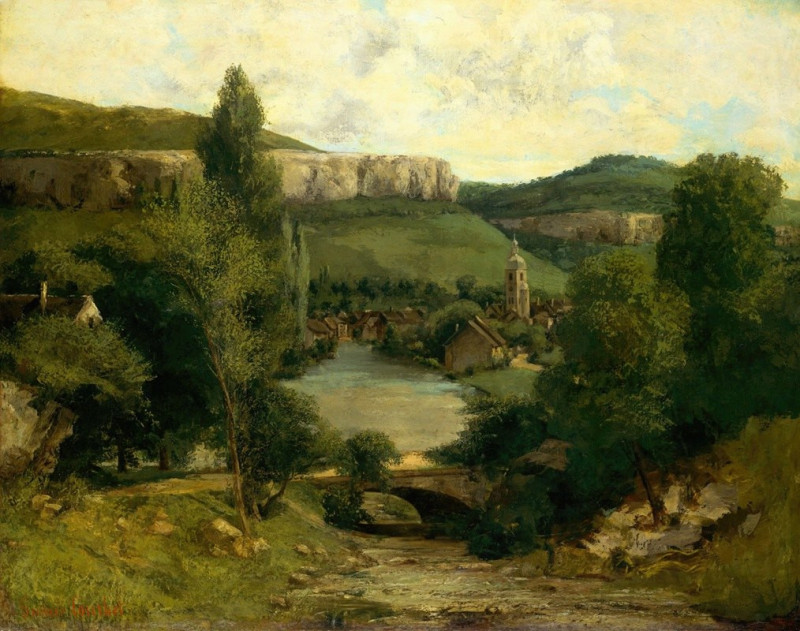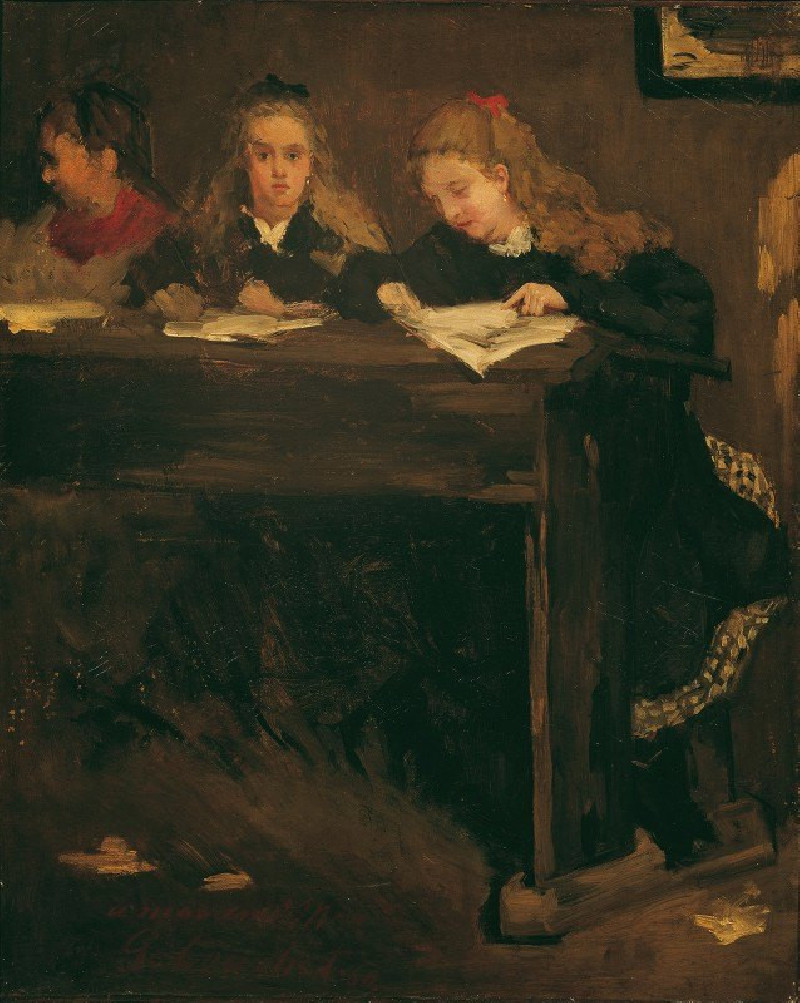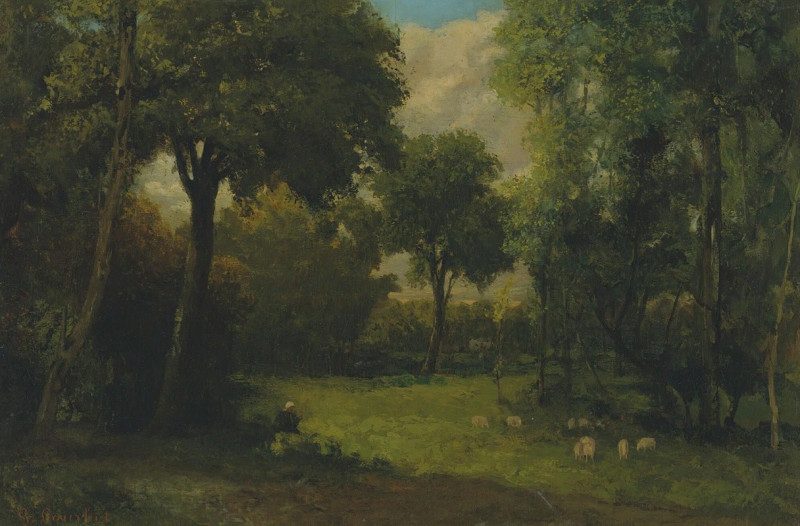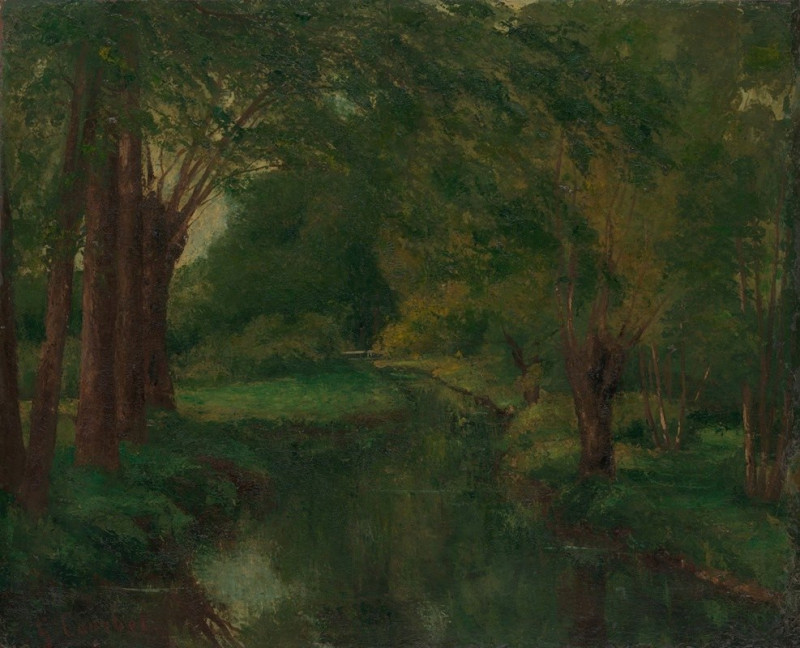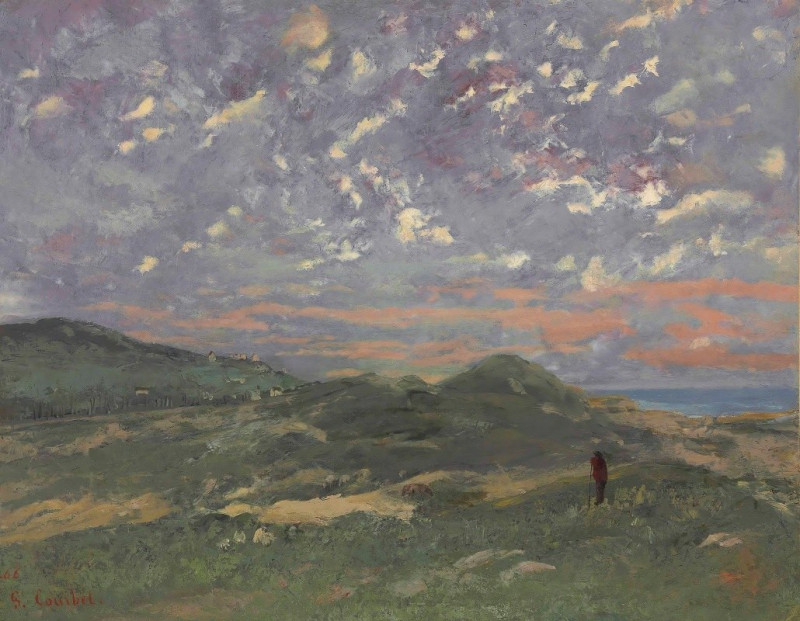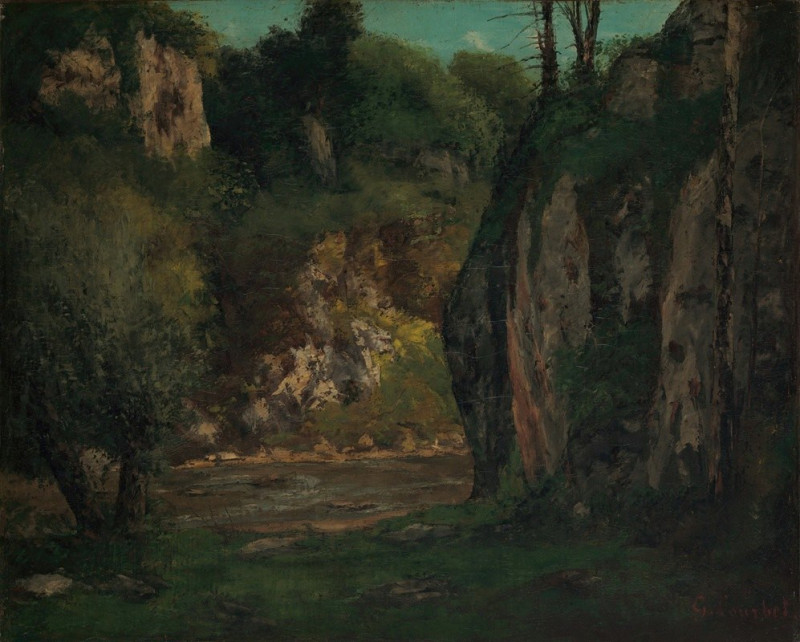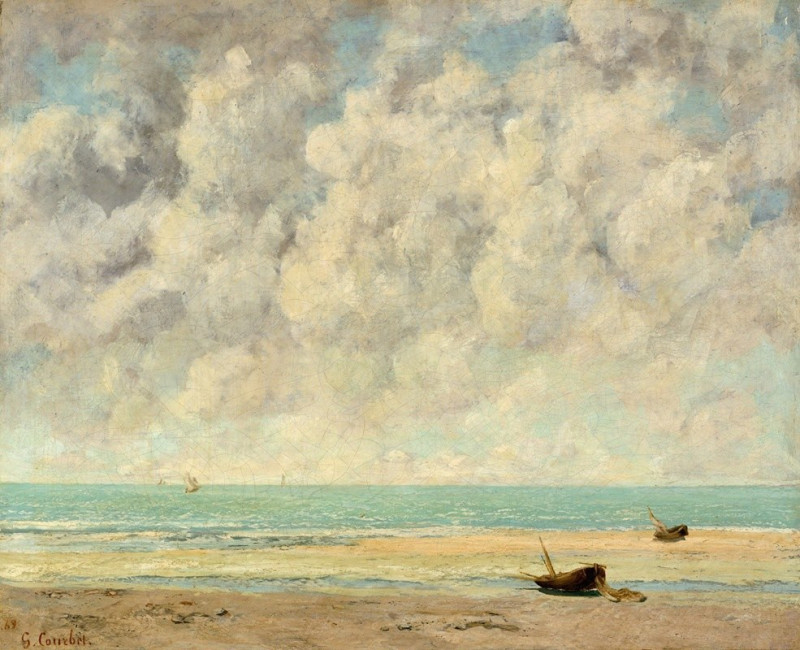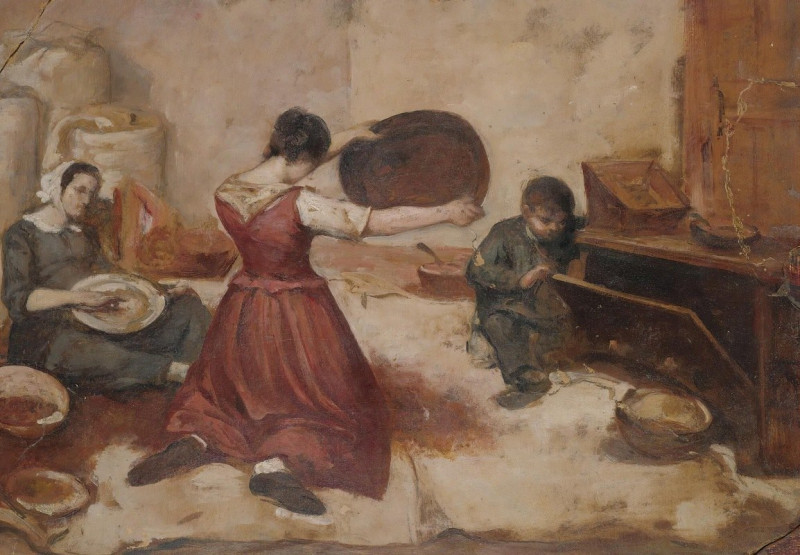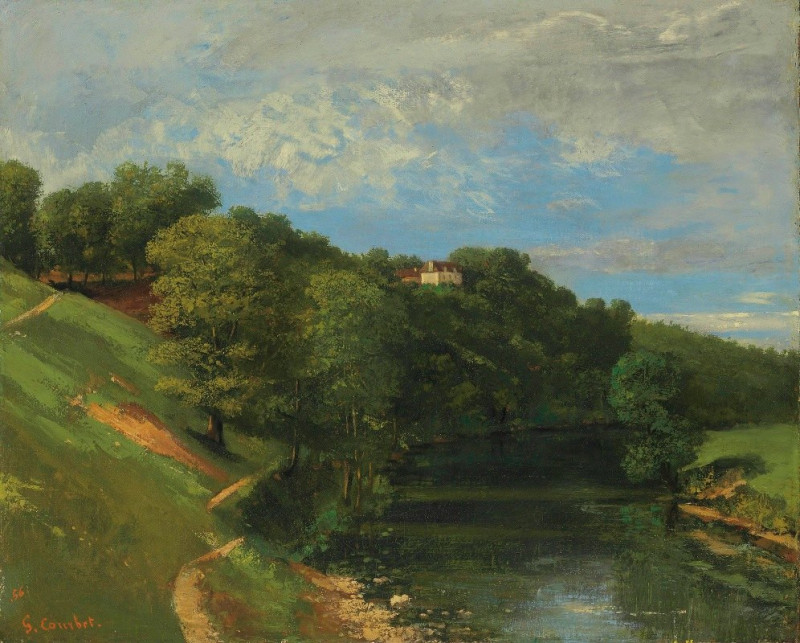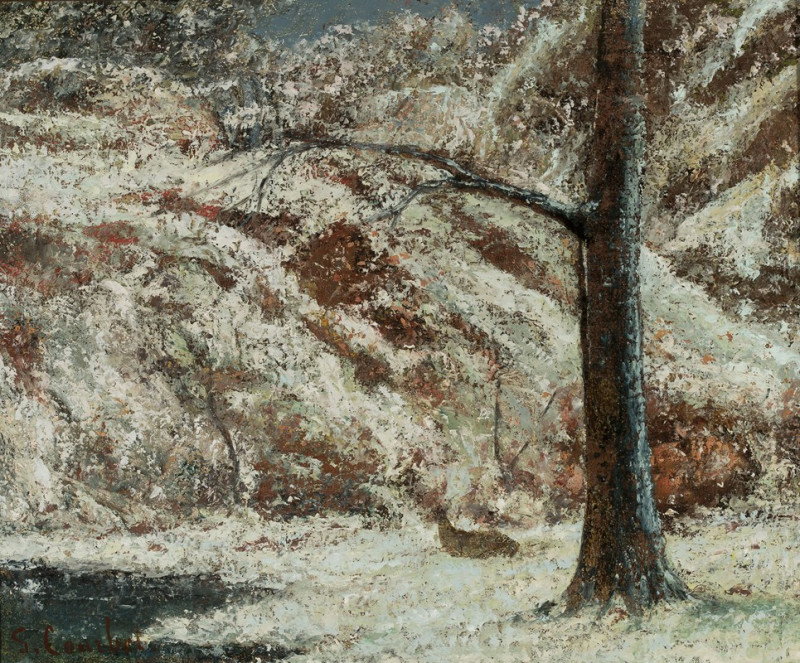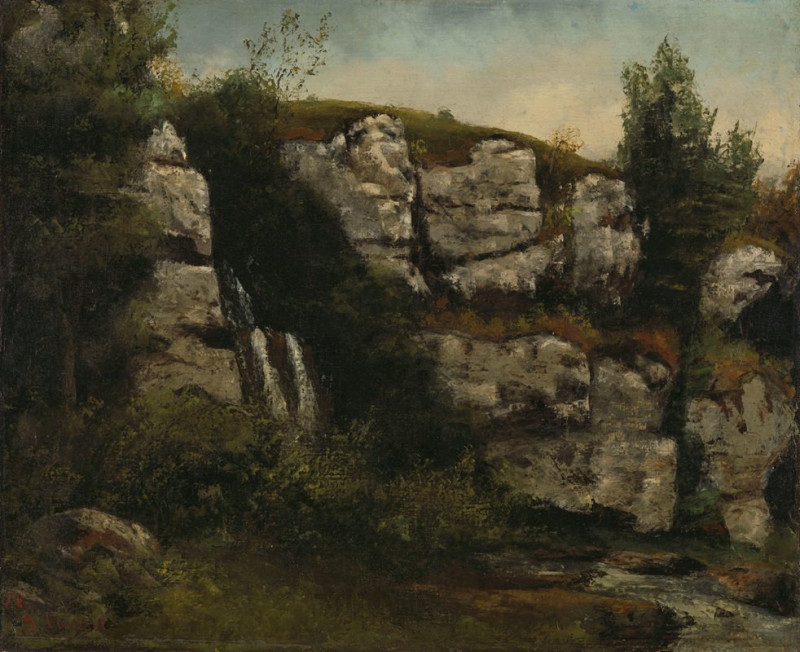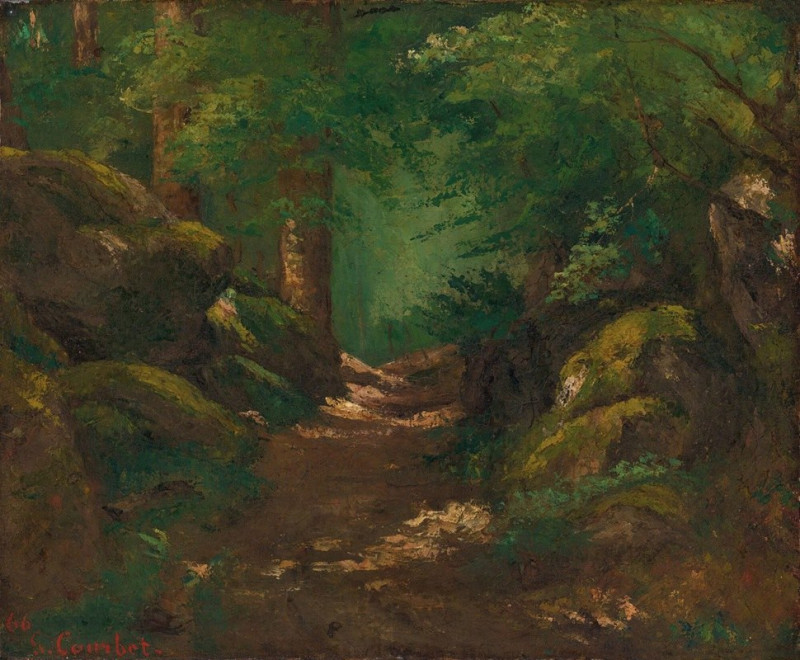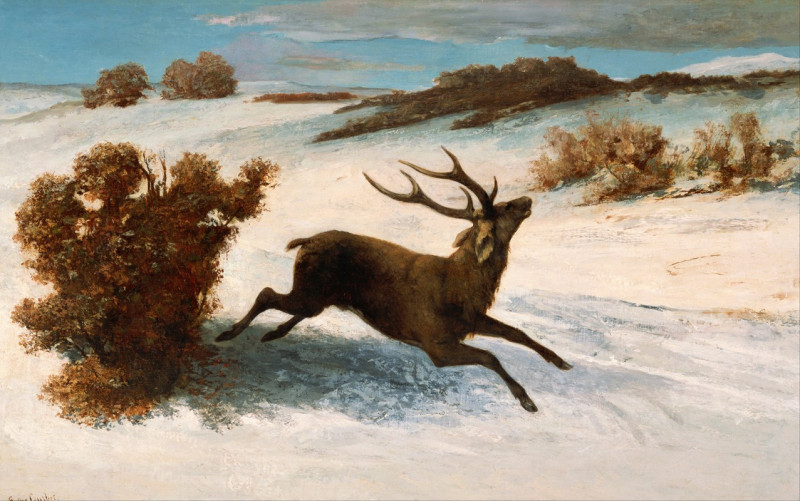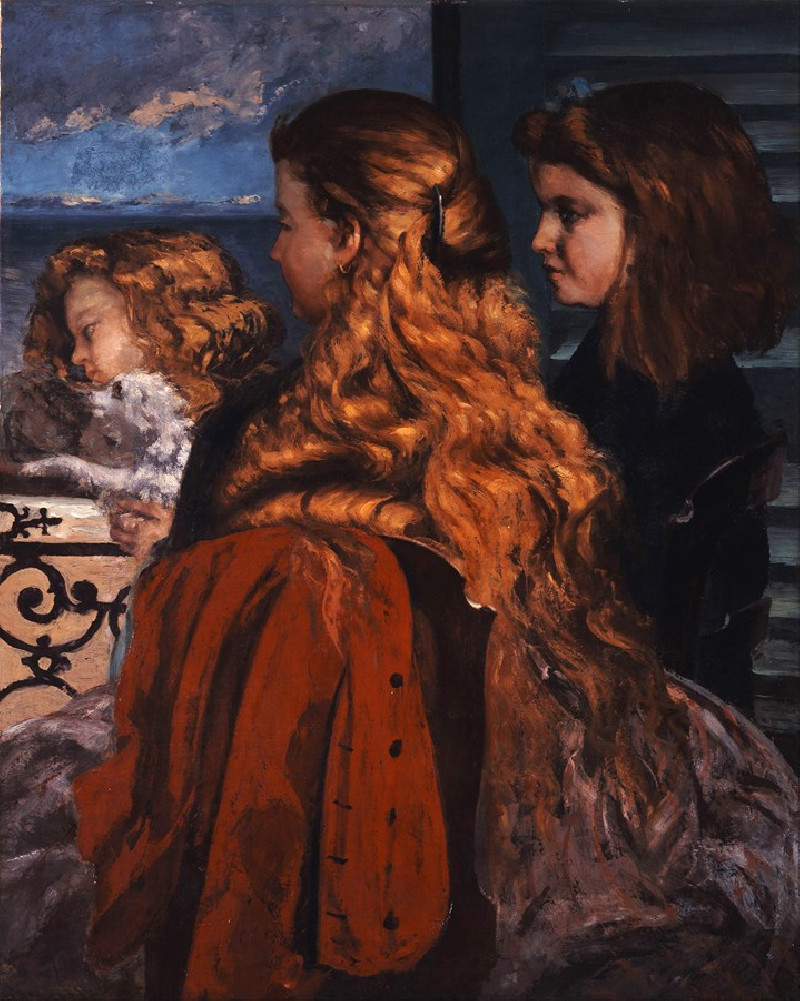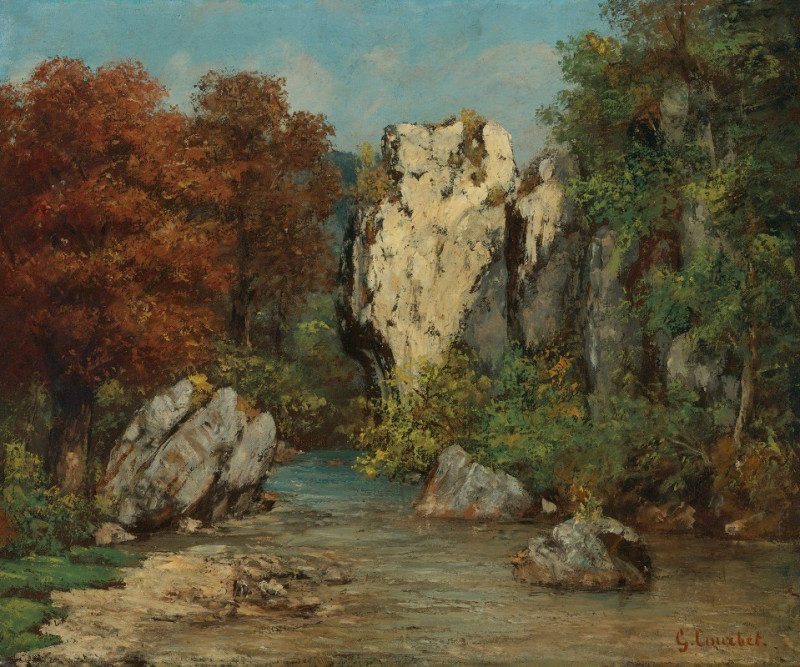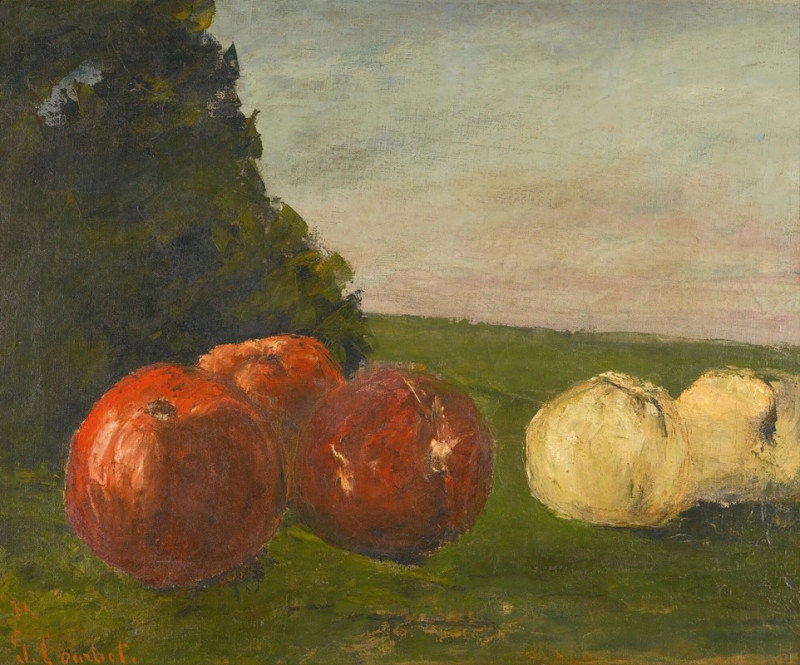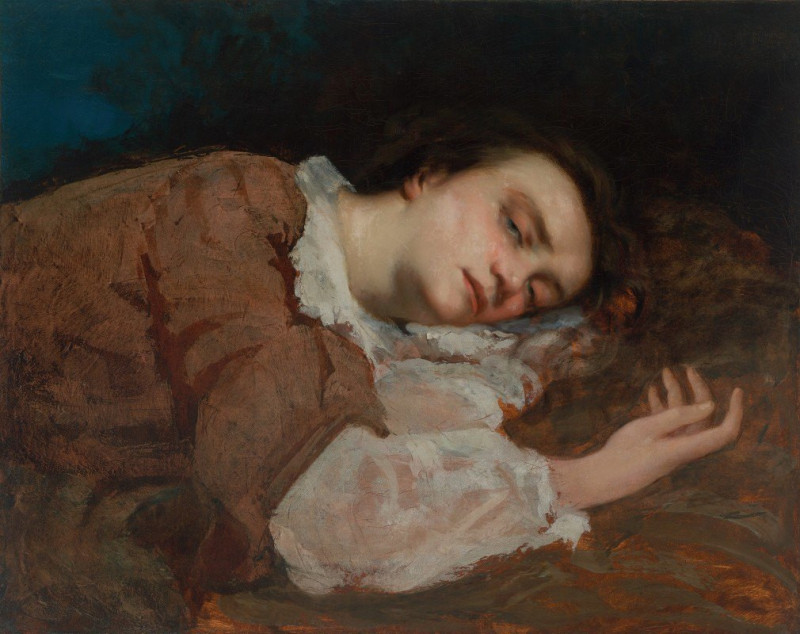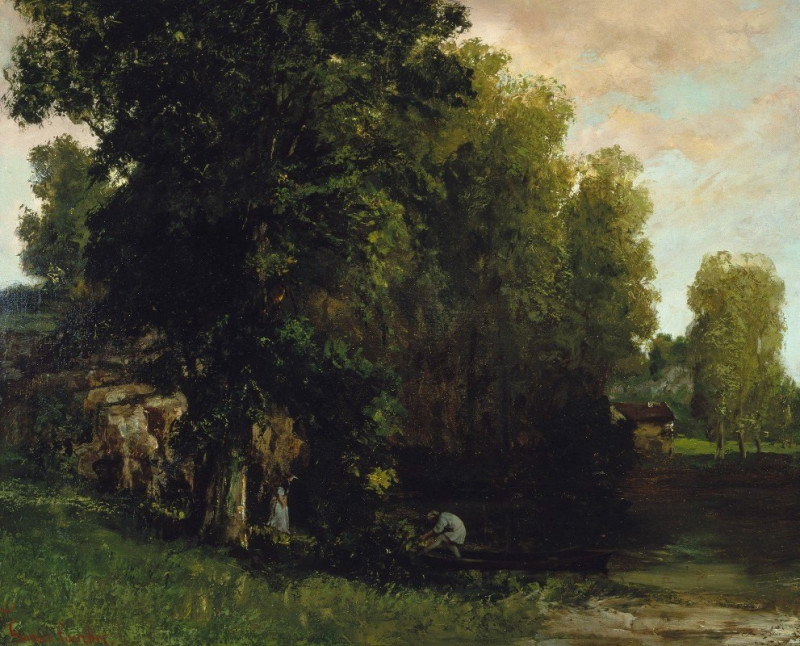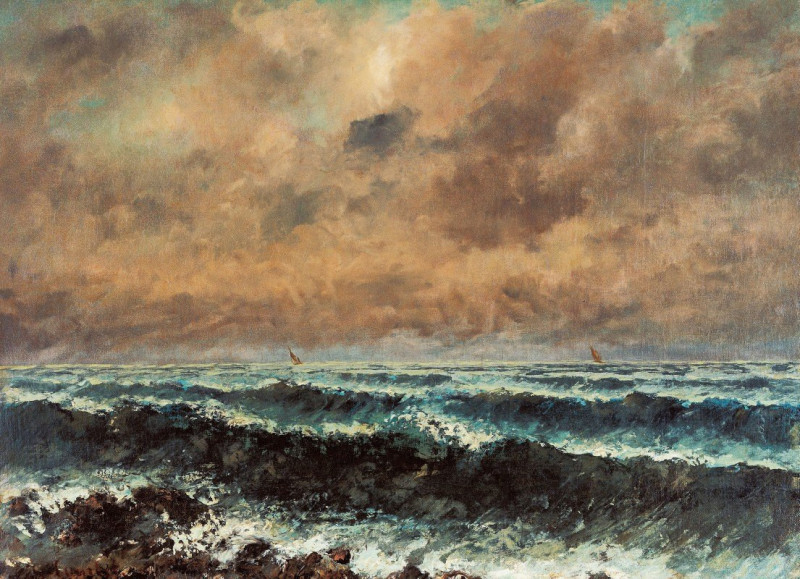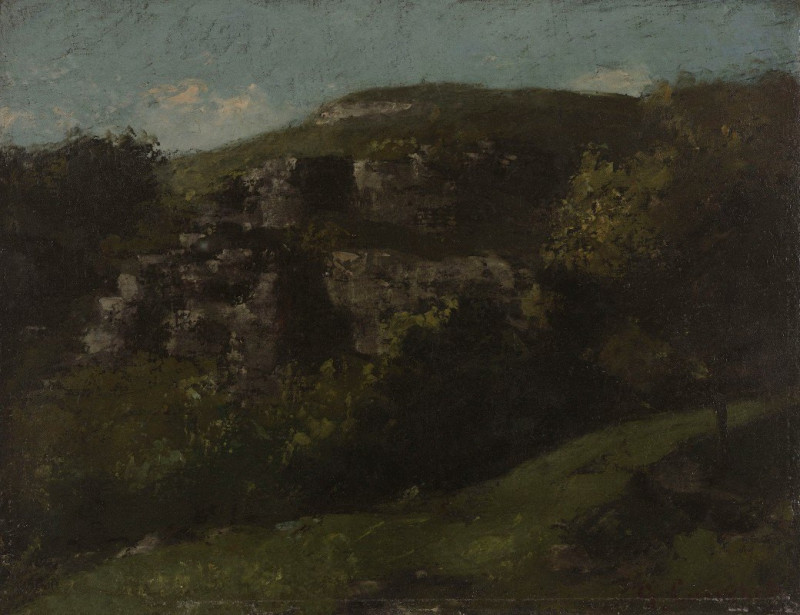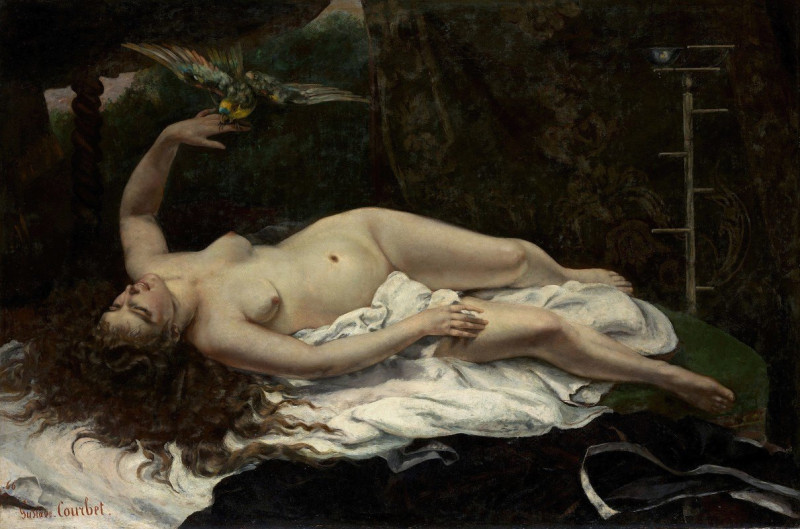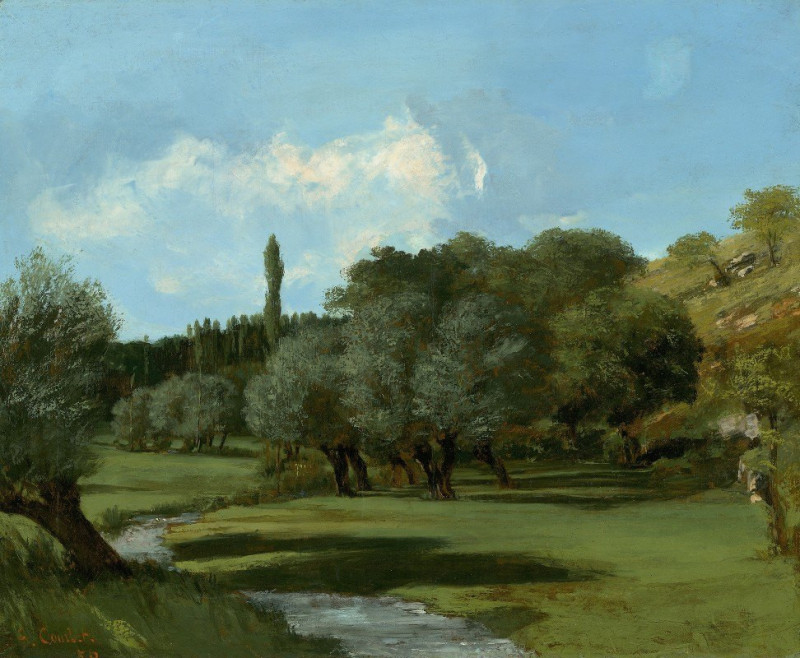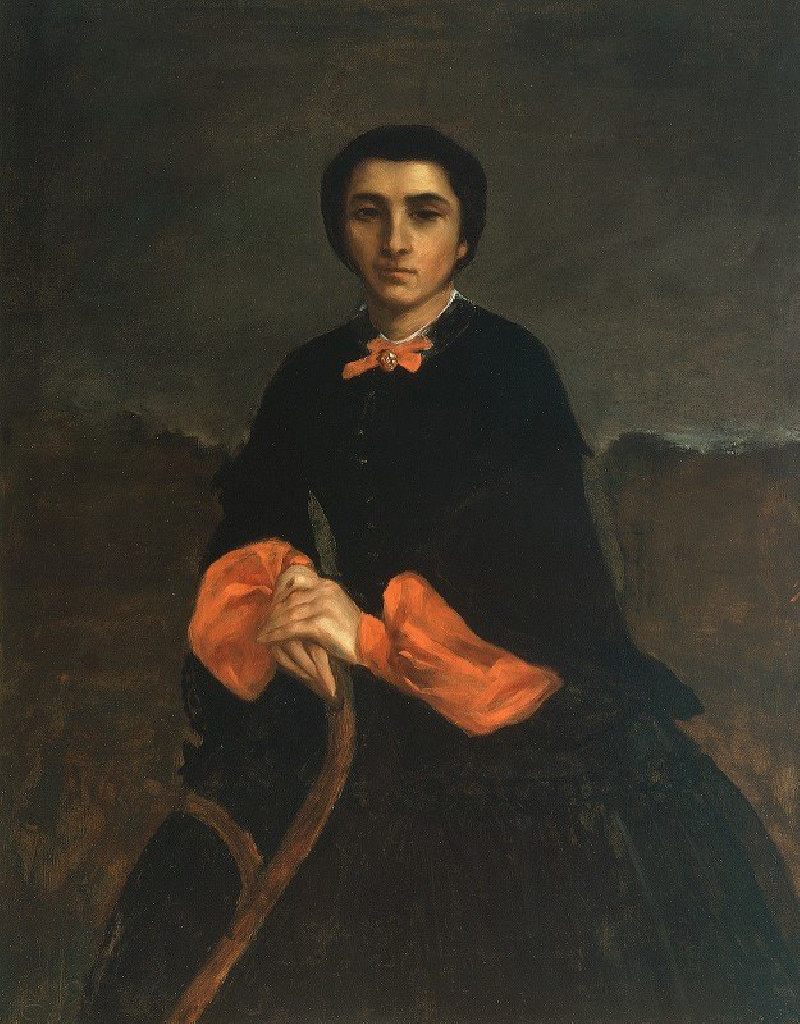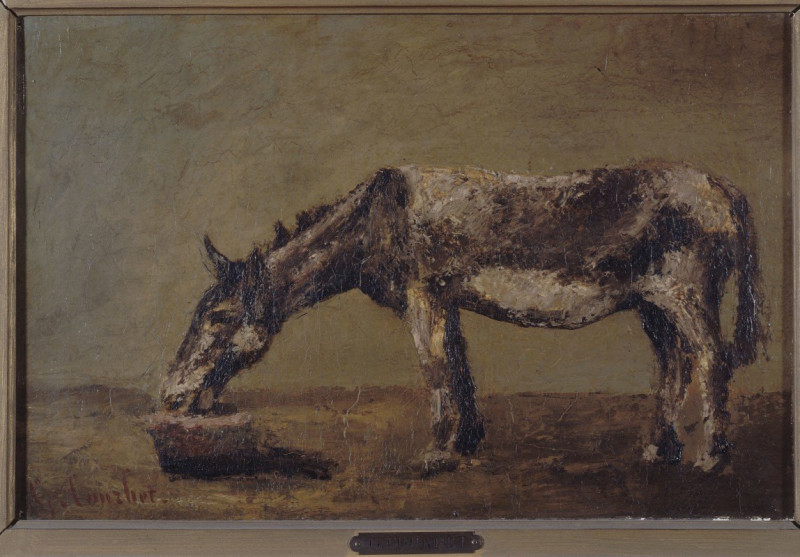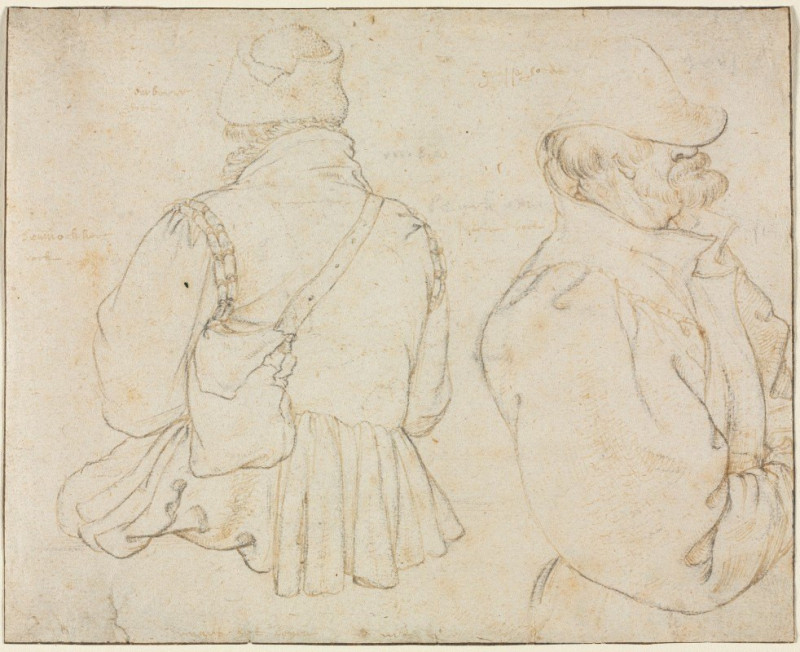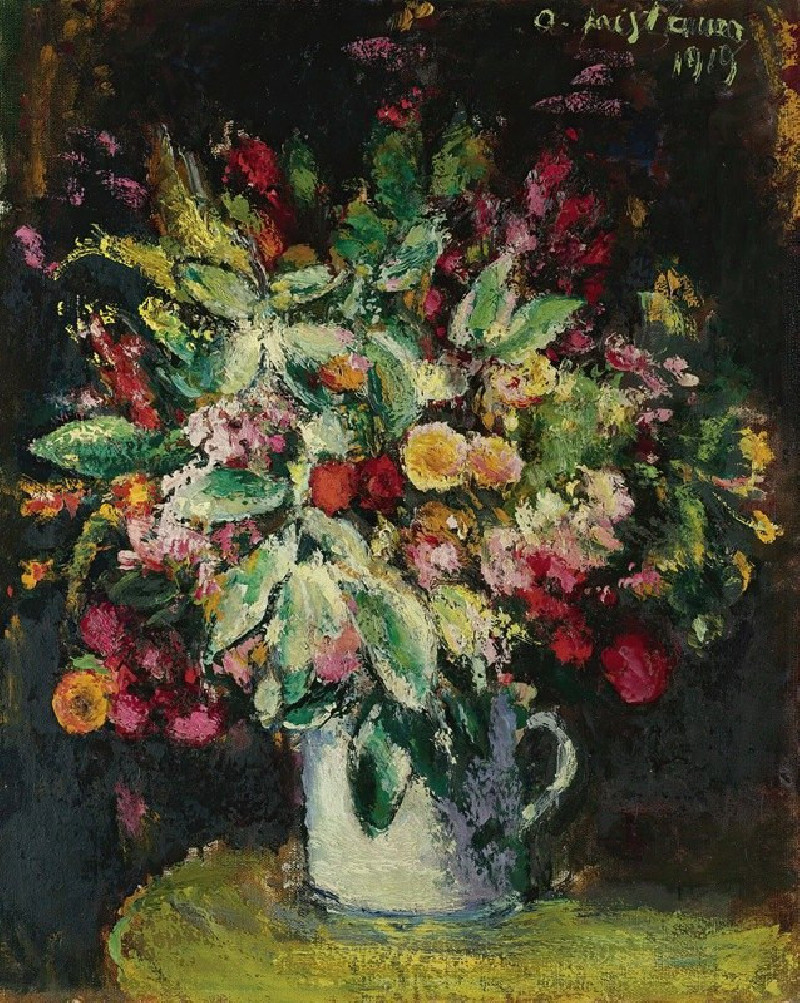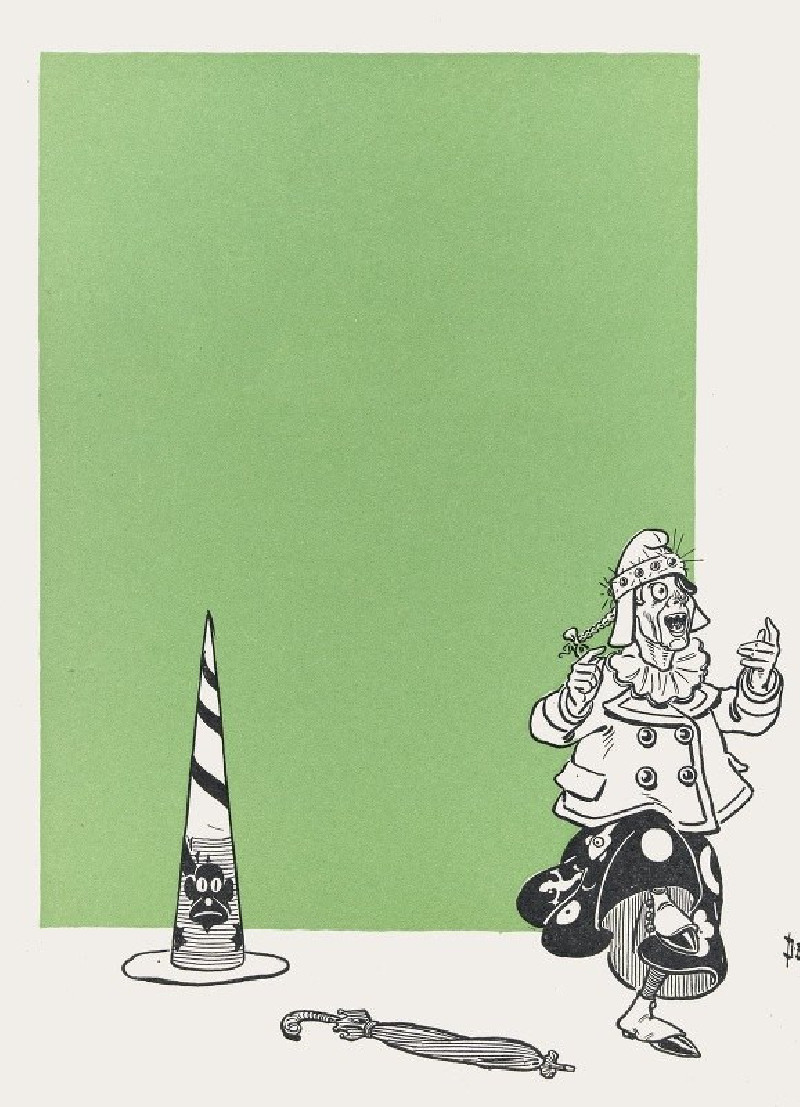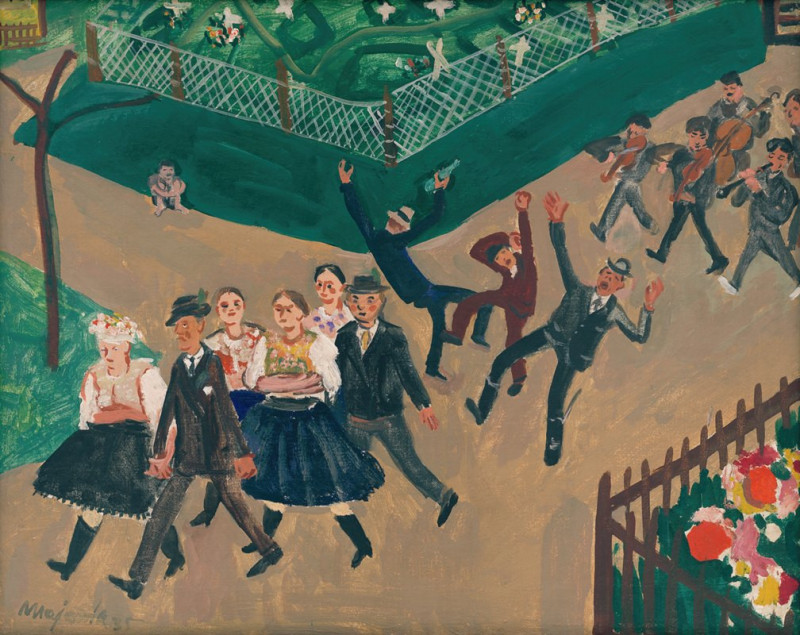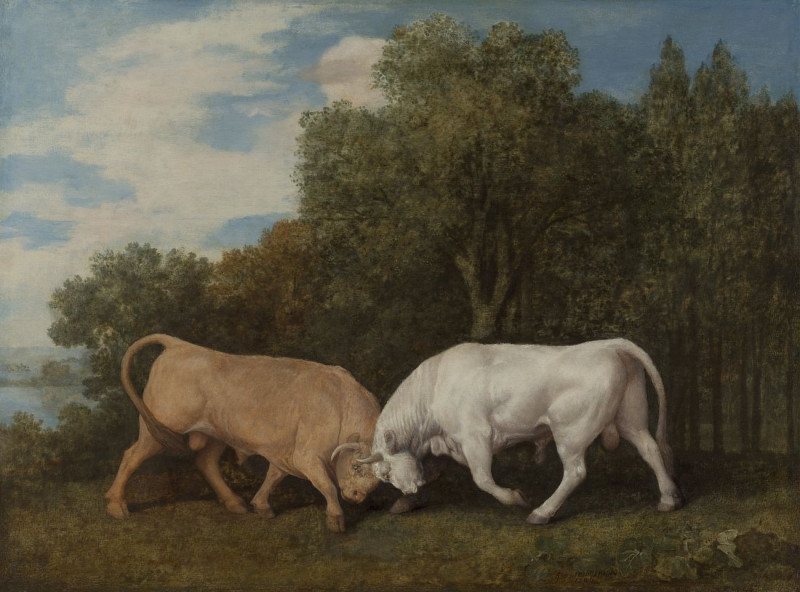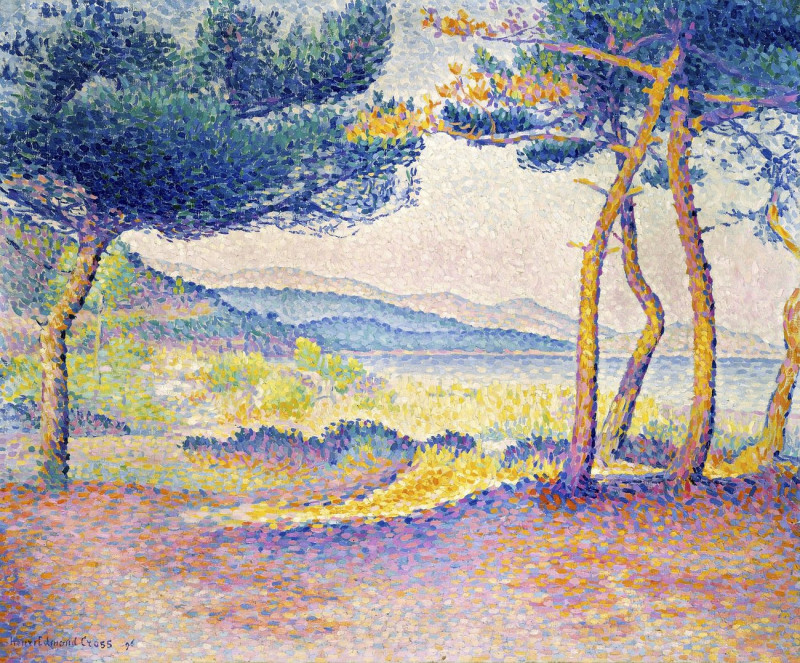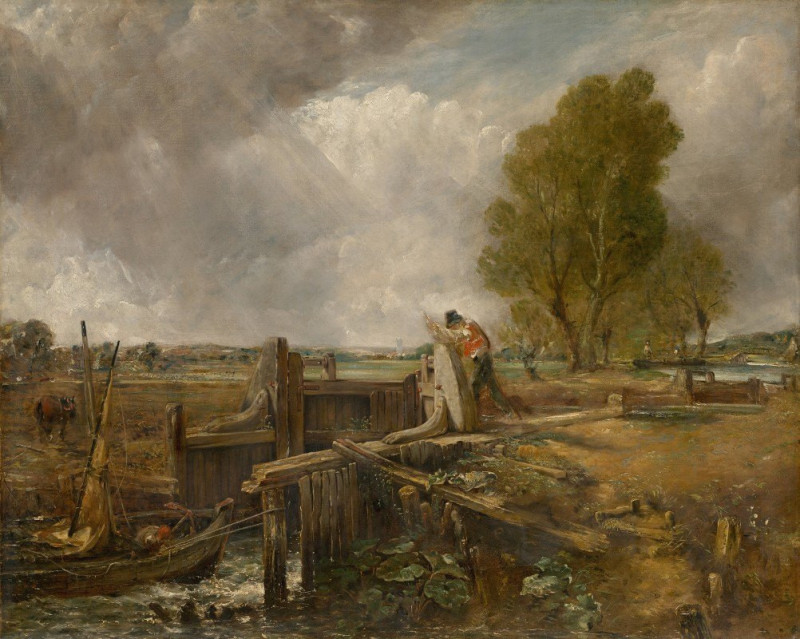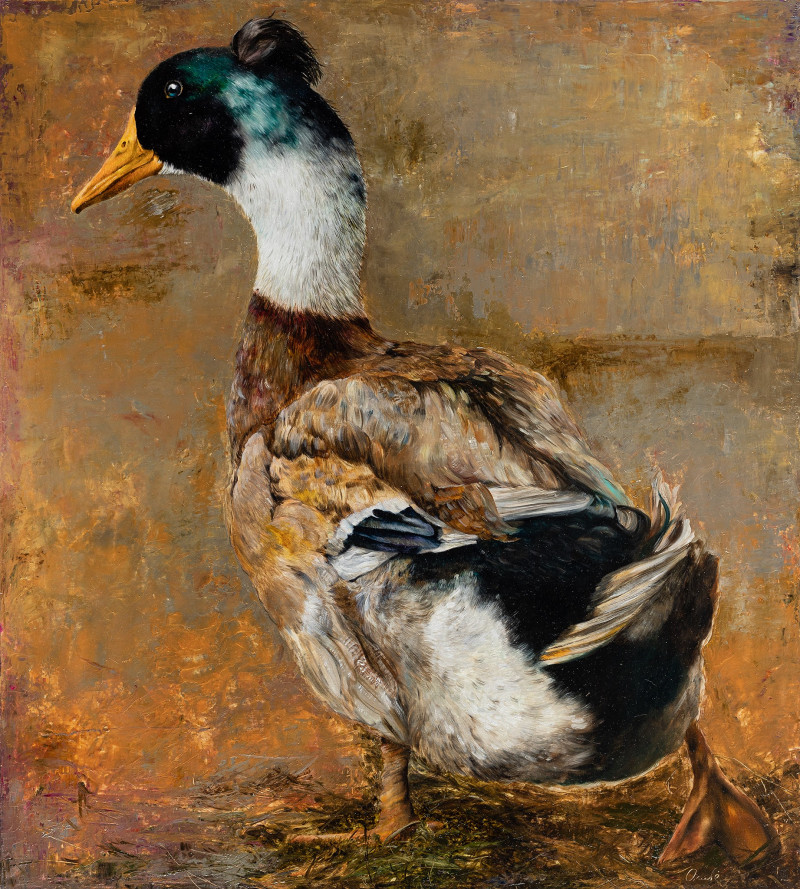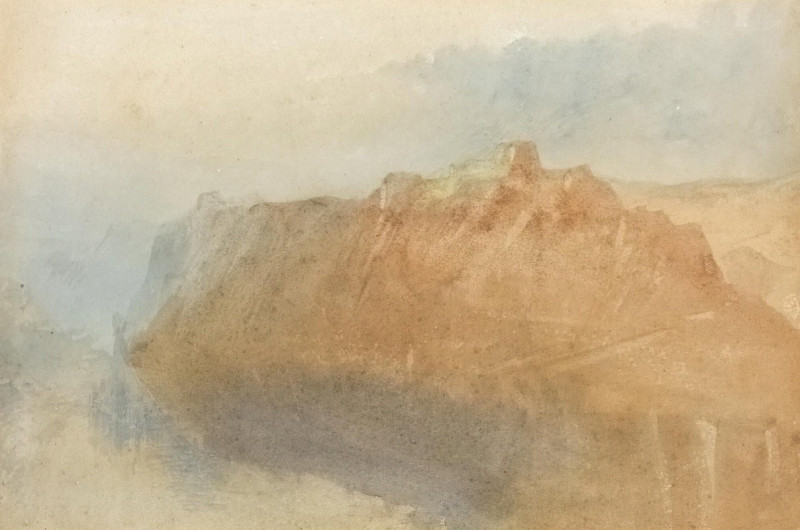View of Ornans (mid-1850s)
Technique: Giclée quality print
Recommended by our customers
More about this artwork
This serene landscape, titled "View of Ornans," painted by Gustave Courbet in the mid-1850s, offers a captivating glimpse into the rural tranquility and natural beauty of the small French town of Ornans, the artist's hometown. Nestled in the valley of the Loue River, this painting reflects Courbet’s deep connection with nature and his origins, a recurring theme across his body of work.In this picturesque representation, Courbet masterfully captures the lush, verdant surroundings that envelop the village. The composition is centered around the gentle meander of the river, guiding the viewer's eye through the scene. A quaint stone bridge spans the river, leading to a cluster of modest, rustic homes characterized by their traditional architecture.Dominating the village skyline is the bell tower of a church, standing as a testament to the enduring presence of community and spirituality in rural life. The church, with its luminous facade catching the sunlight, becomes a focal point amidst the surrounding verdure.The painting is framed by the dramatic cliffs and lush rolling hills that define the landscape of the region. Courbet's skill in rendering the textures of the natural environment — from the rugged cliffs to the soft, dappled foliage of the trees — showcases his commitment to realism and his prowess in capturing the essence of a scene."View of Ornans" is more than just a scenic depiction; it is a profound expression of Courbet’s feelings towards his homeland, imbued with a sense of nostalgia and a profound reverence for the natural world.
Delivery
Returns
Jean Désiré Gustave Courbet (10 June 1819 – 31 December 1877) was a French painter who led the Realism movement in 19th-century French painting. Committed to painting only what he could see, he rejected academic convention and the Romanticism of the previous generation of visual artists. His independence set an example that was important to later artists, such as the Impressionists and the Cubists. Courbet occupies an important place in 19th-century French painting as an innovator and as an artist willing to make bold social statements through his work.

